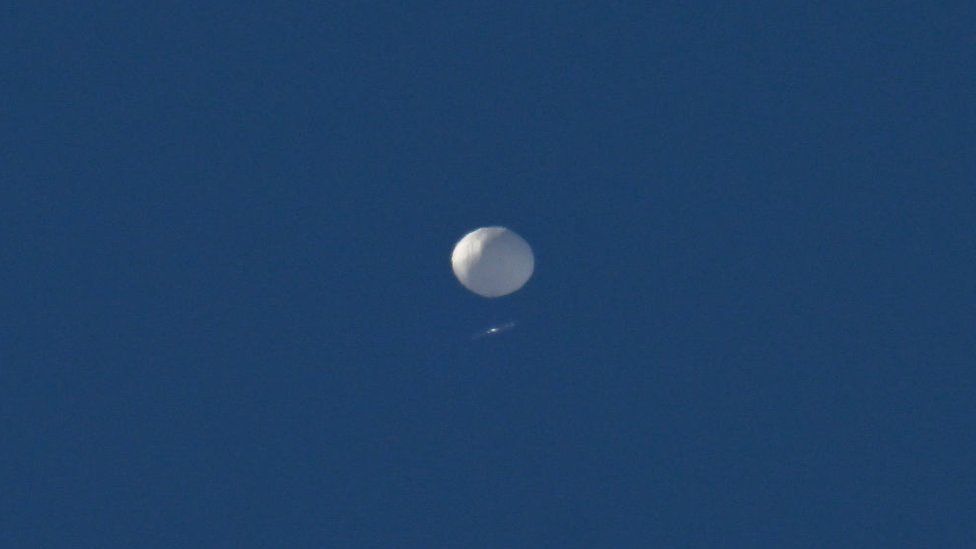ARTICLE AD BOX
 Image source, Getty Images
Image source, Getty Images
By Sam Cabral in Washington and Madeline Halpert in New York
BBC News
Investigators will be seeking clues on why a balloon of Chinese origin flew over US airspace last week when they recover the wreckage of the aircraft.
The balloon, which the Pentagon claims was spying on sensitive military sites, was shot down over US territorial waters on Saturday.
Debris has been spread over a wide area off the South Carolina coast.
China insists it was a weather ship blown astray and has expressed "strong dissatisfaction" over its downing.
US Navy divers are working to recover as much debris from the balloon as possible, including whatever equipment was onboard.
So what do investigators hope to learn once the balloon's debris is recovered?
"We don't know exactly all the benefits that will derive. But we have learned technical things about this balloon and its surveillance capabilities," a top defence official told reporters on Saturday. "And I suspect if we are successful in recovering aspects of the debris, we will learn even more."
Experts who spoke to the BBC said the balloon's contents are key to uncovering its purpose and capabilities.
Iain Boyd, a professor of aerospace engineering sciences at the University of Colorado Boulder, said neither Beijing's nor Washington's official explanations quite make sense yet.
"There's doubt on both sides and that's partly what's so interesting about all of this," he said. "I think the truth lies somewhere in the middle of all of this."
Mr Boyd said that, if rescue teams recover enough of the instrumentation, they will likely be able to know how much information it contained, what kind of information was being processed and if any processed data had been or was being sent back to China.
Seeing the balloon up close - and finding out whether it had such features as propellers or communications equipment - will also help determine if it was being controlled remotely, he said.
Even if the software is damaged or has been somehow wiped, Mr Boyd argued investigators will be able to evaluate things like the resolution and quality of surveillance images it may have taken.
"It would be very surprising if there's any technology on that platform that the US does not already have some equivalent form of, but it does give the potential to give the intelligence services here an understanding of the technological maturity that the Chinese have for these kinds of applications," he said.
The US will aim to find any sensors they can in the balloon wreckage to use that to uncover the purpose of the aircraft, said Gregory Falco, an assistant professor at Johns Hopkins University's Department of Civil and Systems Engineering.
But that won't be easy to do, he told the BBC, as the sensors - which detect different types of wavelengths - are typically small and may have been damaged after the US military shot the spy balloon. He said it's unclear from video footage of the incident how bad the damage is to the aircraft.
China, like the US, is a "pretty smart adversary", and also probably planned for the aircraft to self destruct or scramble data as a part of the spy espionage mission, Dr Falco said.
"Shooting this thing down was just a show of national pride more so than anything, because I'm not sure what we're gonna grab out of this," he said.
But information from the downed balloon could help US officials "understand their adversary a little bit better", he said.
The US could uncover how data captured by the aircraft was sent back to China, Dr Falco said. The country may have used a "hybrid satellite network", which use high-altitude platforms to relay data to the nearest orbital-friendly satellite. Once the satellite is in safe territory, it links to a ground station, or an antenna that functions as a control system, Dr Falco said.
China has "a huge swath of ground stations that are outside of China", Dr Falco said. As long as the balloon was able to connect to a satellite, which would then link to a ground station, China would be "all set with their data" and could wipe the balloon, he said.

 1 year ago
26
1 year ago
26








 English (US)
English (US)